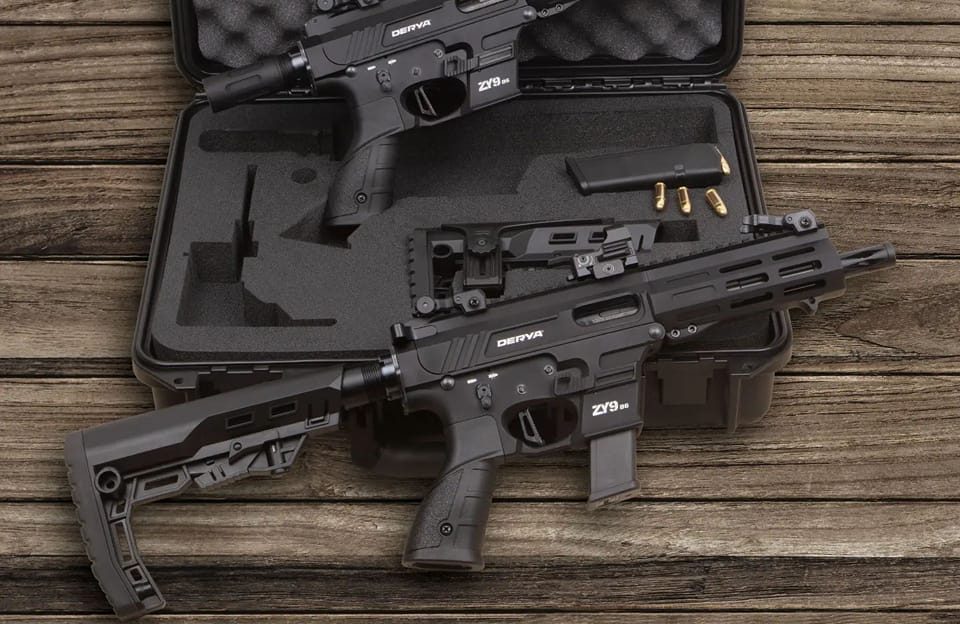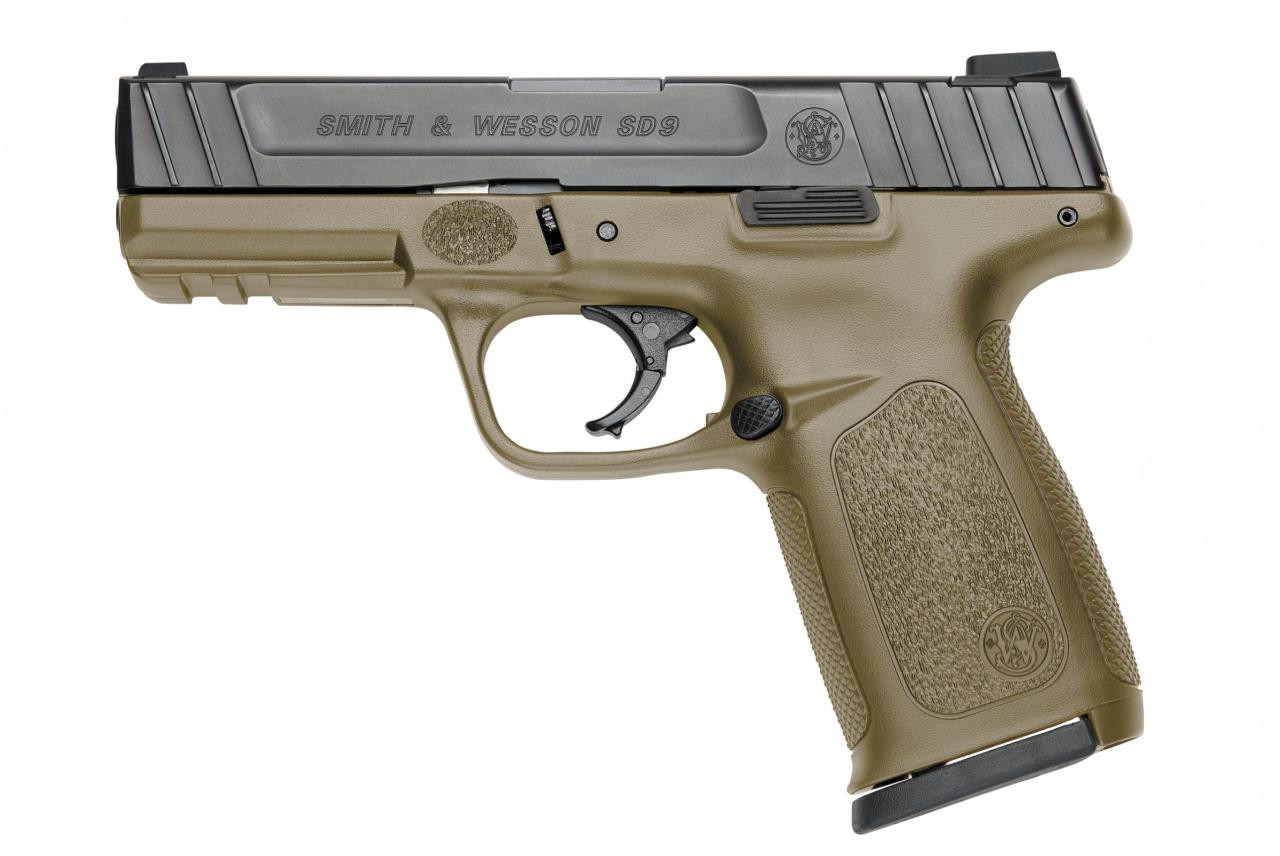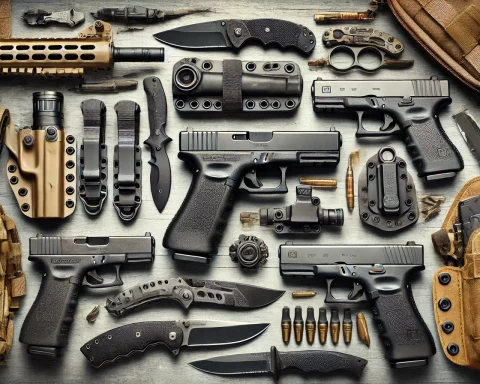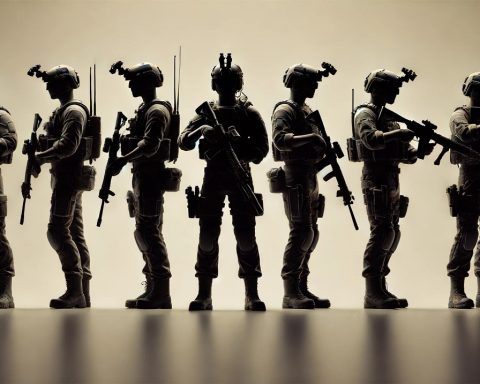Step into the world of military technology and discover the captivating story of polymer-based firearms. Trace their roots back to 1970 when HK made a revolutionary debut with their VP/70 Volkspistole. Fast forward to today, and you’ll see that polymer guns have become a staple among military forces; even ammunition is shifting toward polymer materials.
What is a Polymer Gun?
A polymer gun is a firearm made with polymer, a material composed of repeating molecular units, as an alternative to metal parts in guns. This construction offers a lightweight and durable solution that is resistant to corrosion and enhances performance and longevity for shooters. With the increasing popularity of polymer technology in the firearms industry, there are now numerous options available for gun enthusiasts.
Polymers can be found in every type of modern firearm, including rifles like the CZ BREN 2, handguns like the Fort-17 (a polymer-frame version of the Fort-12), shotguns, and even tactical knives.
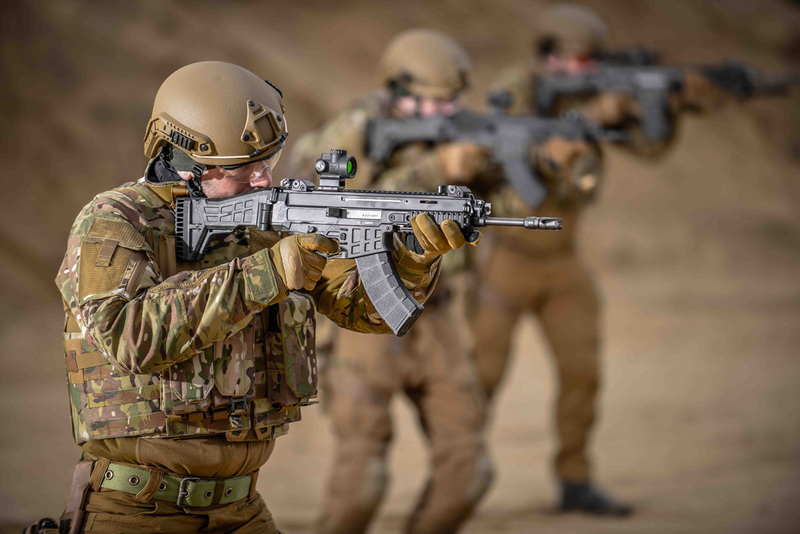
What guns are made of polymer?
In the modern world, many of the newly released firearms you will come by will include polymer, whether you’re looking at rifles, handguns, or shotguns.
Rifles
- Smith & Wesson M&P 15 Sport II
- Ruger AR-556
- Daniel Defense DDM4 V7
- Sig Sauer M400 Tread
Handguns
- Glock 19
- Smith & Wesson M&P Shield
- Sig Sauer P320
- Heckler & Koch VP9
Shotguns
- Remington V3 Field Sport
- Mossberg 930
- Benelli M2 Field
- Winchester SXP Defender
What are the benefits of polymer guns?
Lightweight and Durable
- Light Weight = Less Work: Polymer-based weapons are lighter than traditional metal weapons, which can weigh several pounds. People can carry their guns without experiencing fatigue, which is especially important in overwhelming activities.
- Better Maneuverability: These weapons are easier to maneuver since they are lightweight. With that, polymer gun users are sure to be able to do quicker and more agile movements than with traditional guns when using them.
- Bigger Loadout: Due to its lightweight nature, people carrying multiple guns or other equipment can carry more than usual.
- Increased Durability: Polymer firearms are also known for their durability, a key factor for guns used in extreme conditions. The tough polymer materials used in manufacturing these weapons are resistant to damage from impacts, extreme temperatures, and corrosives. This means that users can rely on these guns to work when they need them the most.
Less Maintenance Required
The durability of polymer weapons reduces the need for maintenance, which means polymer weapon users do not need to worry much about regular inspections of their guns.
Cost-Effective
The use of polymer materials in manufacturing weapons is cost-effective compared to traditional metal weapons. The polymer materials used in these weapons are less expensive than conventional ones, leading to lower production costs.
Lower Maintenance Costs
In addition to the lower production costs, polymer-based weapons also have lower maintenance costs than traditional weapons. These weapons are known for their durability and resistance to damage, requiring less maintenance.
Customization
- These guns are known for their versatility and customization options. The customization options for polymer-based weapons include changing the grip, adding accessory rails, and altering the shape of the stock to provide a more comfortable fit.
- Customization allows people to personalize their weapons to fit their needs and preferences. This can improve comfort and maneuverability, which is essential for gun enthusiasts.
- Customization options for polymer firearms can also be tailored to meet the specific requirements of each type of gun user. This includes changing the color or adding logos or markings to identify the guns belonging to a specific person or organization.
- Customization is a key factor for military organizations, as it allows them to differentiate their weapons from their opponents, providing a tactical advantage in combat situations.
Due to polymer guns’ numerous advantages and improvements, many shooters are choosing to upgrade and sell their older guns in favor of newer, polymer-based options.
Environmental Factors
- Polymer guns are designed to perform well in various environmental conditions, which is critical for hunters, adventurers, survivalists, and soldiers who operate in harsh environments.
- The materials are resistant to damage from extreme temperatures, corrosives, and humidity, making them ideal for use in environments where metal weapons typically corrode or deteriorate quickly.
- Their environmental durability is a significant advantage, as users can rely on their guns to work regardless of environmental conditions.
- Polymer guns are also resistant to rust, a common issue for metal weapons exposed to moisture. This means that owners can store their guns without worrying about rust damage, which can impact the performance of their weapons.
- Furthermore, polymer firearms are resistant to impact damage, making them less likely to be damaged when dropped or bumped. This is important for owners who need to carry their guns over rough terrain.
What are the Drawbacks of Polymer Guns?
- Cracking Under Extreme StressOne of the primary concerns with polymer guns is the potential for cracking under extreme stress, which could lead to malfunctions and render the firearm unusable.
- Durability Over TimePolymer guns may not be as durable over long periods as traditional metal firearms, especially if exposed to harsh environmental conditions or frequent use.
- Shorter LifespanAdditionally, some models may have a shorter lifespan than traditional metal firearms due to the inherent properties of the polymer materials used in their construction. This could mean that the polymer material may degrade over time or that the gun may not be able to withstand the same level of wear and tear as a traditional metal firearm.
Note: These potential drawbacks should be taken into account when deciding whether a polymer gun is a right choice for a particular application.
Are Polymer Guns Better?
Polymer-based weapons have many advantages over traditional metal weapons, including their lightweight and durable design, cost-effectiveness, customization options, and resistance to environmental factors. These advantages make them ideal for gun owners who need light weapons to ensure diverse conditions. These weapons’ reduced weight and improved maneuverability can even provide a tactical advantage in combat situations. At the same time, their cost-effectiveness and environmental durability make them a cost-effective and reliable option for any activity.

While it is impossible to call them ‘better,’ generally, they are a great option for the versatile shooter. The customization options for many polymer guns allow people to tailor their weapons to meet their specific needs and preferences and add a wide range of custom parts, which is simply fun!
While many traditionally built firearms are beautiful, hand-crafted masterpieces, it may be worth having some polymer options in your safe too. Happy shooting!


